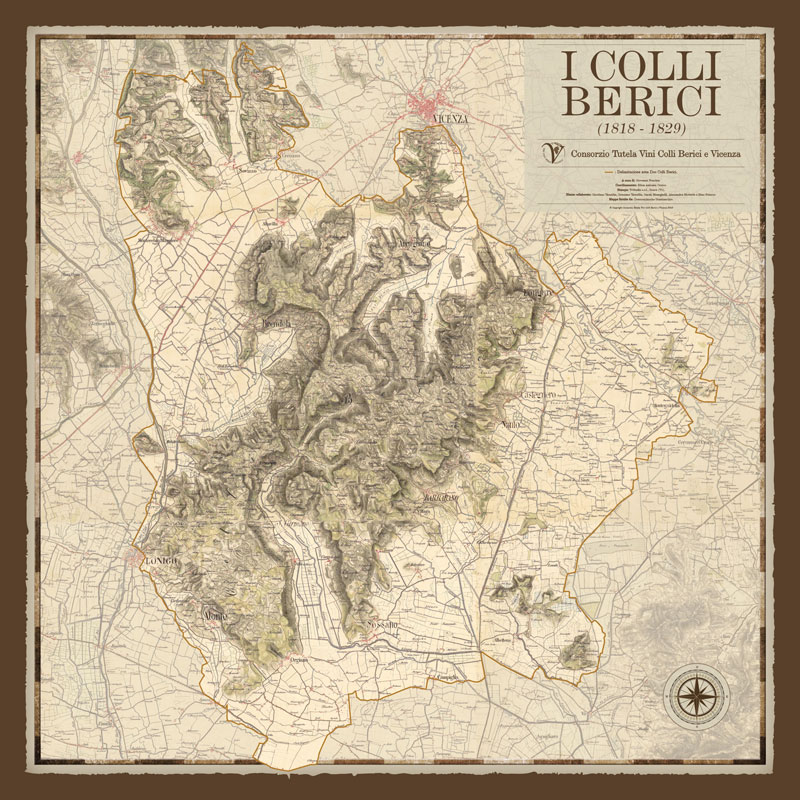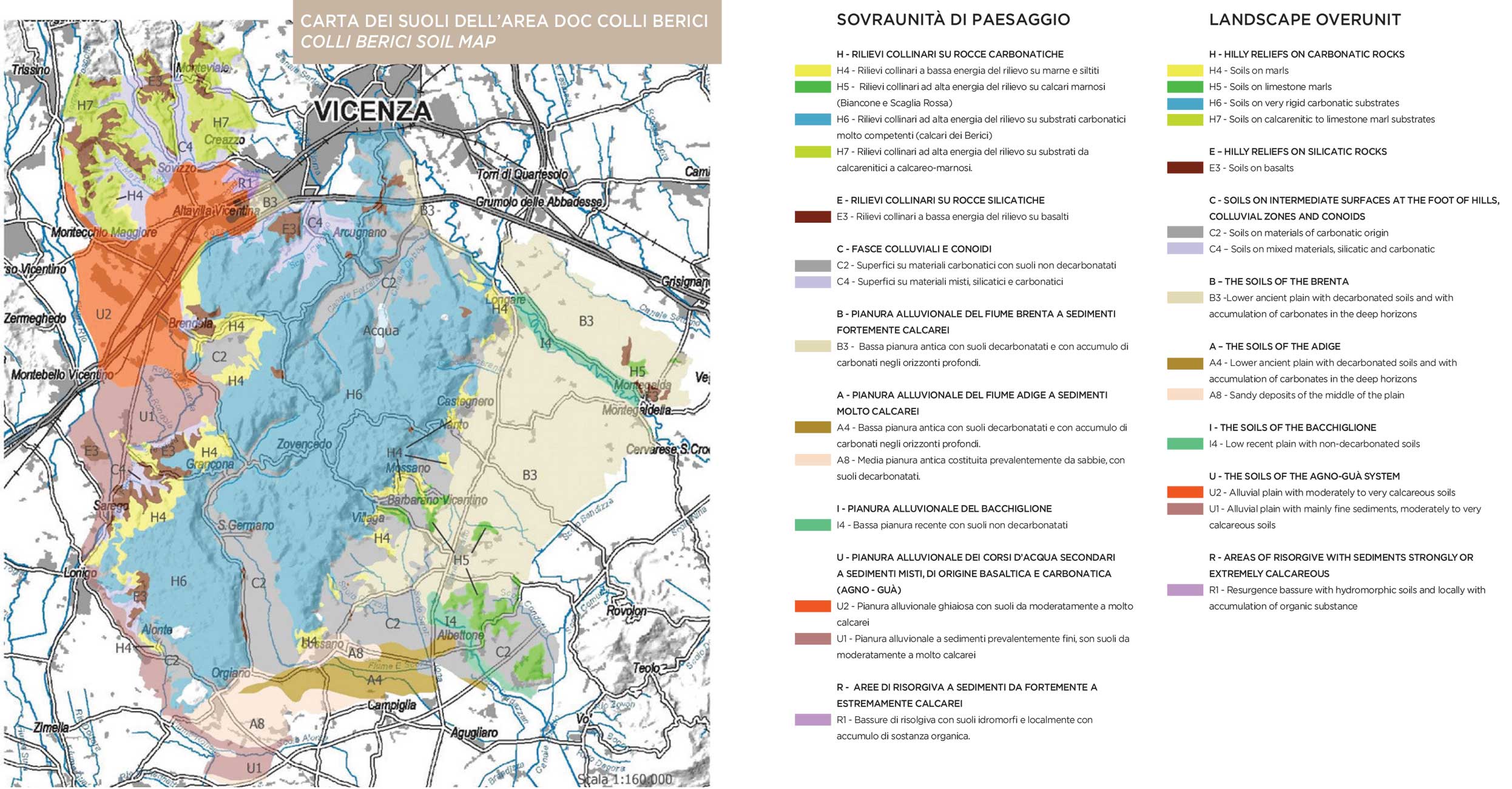The Berici Hills, a unique territory
The landscape of the Berici Hills is an alternation of valleys, plateaus and reliefs rising up to 400 meters. A territory that originated millions of years ago in the depths of the sea and today has a multitude of facets, with calcareous, basaltic, sandy and clay soils that give the wines unique characteristics.

The Berici Hills, a unique territory
The landscape of the Berici Hills is an alternation of valleys, plateaus and reliefs rising up to 400 meters. A territory that originated millions of years ago in the depths of the sea and today has a multitude of facets, with calcareous, basaltic, sandy and clay soils that give the wines unique characteristics.
The history of the Berici Hills
Among the oldest inhabited places in Italy we find the Berici Hills, which since prehistoric times have offered shelter to the people of the area, becoming, over the centuries, a key hub for agriculture and trade.
The location and conformation of the territory favored the construction of marvelous rural architecture set among the hills, such as water mills, castles and hermitages, many of which can still be seen today. These are also complemented by a vast heritage of Venetian villas, which reaches its highest expression in the 16th-century architecture of Andrea Palladio.
An extreme offshoot of the Pre-Alps projected into the plain almost attempting to reach the nearby Euganean Hills, the Berici Hills constitute the most scenically relevant area of Vicenza, in the south of the County Seat. Somewhat different from their Paduan brethren, the Berici Hills are on average lower, but more “alpine” in appearance, presenting gorges and depressions.
A beautiful lake, the Fimòn, is also hidden among these hills,
in the Northeast area, where pile dwellings have been found that testify to the ancient presence of man, three thousand years before the birth of Christ. And of the same age are the first presences of the vineyard, as told by the numerous remains of grape seeds found.
Here the limestone rock, red clay soils and basaltic soils of volcanic origin, the altitude that keeps the fog away and the low annual rainfall create an optimal environment suitable for viticulture.
Chronicles recount that since the 13th century the entire northern part of the Hills, with the sanctuary of the Madonna of Monte Berico at its center, was entirely cultivated with vines, as were the hills in the area of Nanto, famous for its working stone, and Barbarano, owned by the Bishop of Vicenza. Today, vines pander to the Beric landscape, later giving way to the cultivation of olives.
This area has been preserved as a place of tranquility nestled among steep hills, rivers and forests.
The geology of the Berici Hills
The history of the Berici Hills is a journey that begins more than 60 million years ago at the Tropic of Cancer, beneath a deep ocean populated by a rich life of organisms that slowly deposited on the seafloor, giving rise to a primitive formation that we can call Paleo-Berici.
Along the eastern part, what is now the Riviera Berica, over the millennia, a rock fracture opened where the formation of the oldest of the stones still extracted from the Berici began, the Nanto Stone, while on the other side a system of active volcanoes was formed.
The southeastern part of the Paleo-Berici also hosted a long reef-like marine environment, which still
today we can glimpse in the rocks from Lumignano to San Donato di Villaga, giving rise to what we call Pietra di Vicenza.
For millions of years, these rock formations were at the mercy of the sea: the stratifications we find today in the Berici Hills witness dips and emersions, which gave rise to limestone, clay, and sandy soil, with the presence of basaltic rocks next to volcanic cones.
The clash between the Adriatic and the Eurasian plate determined the arching of the soil, and 6 million years ago, while the sea was definitively retreating from the plain, the Berici Hills emerged, which since then have been shaped only by wind, rain, and frost.


